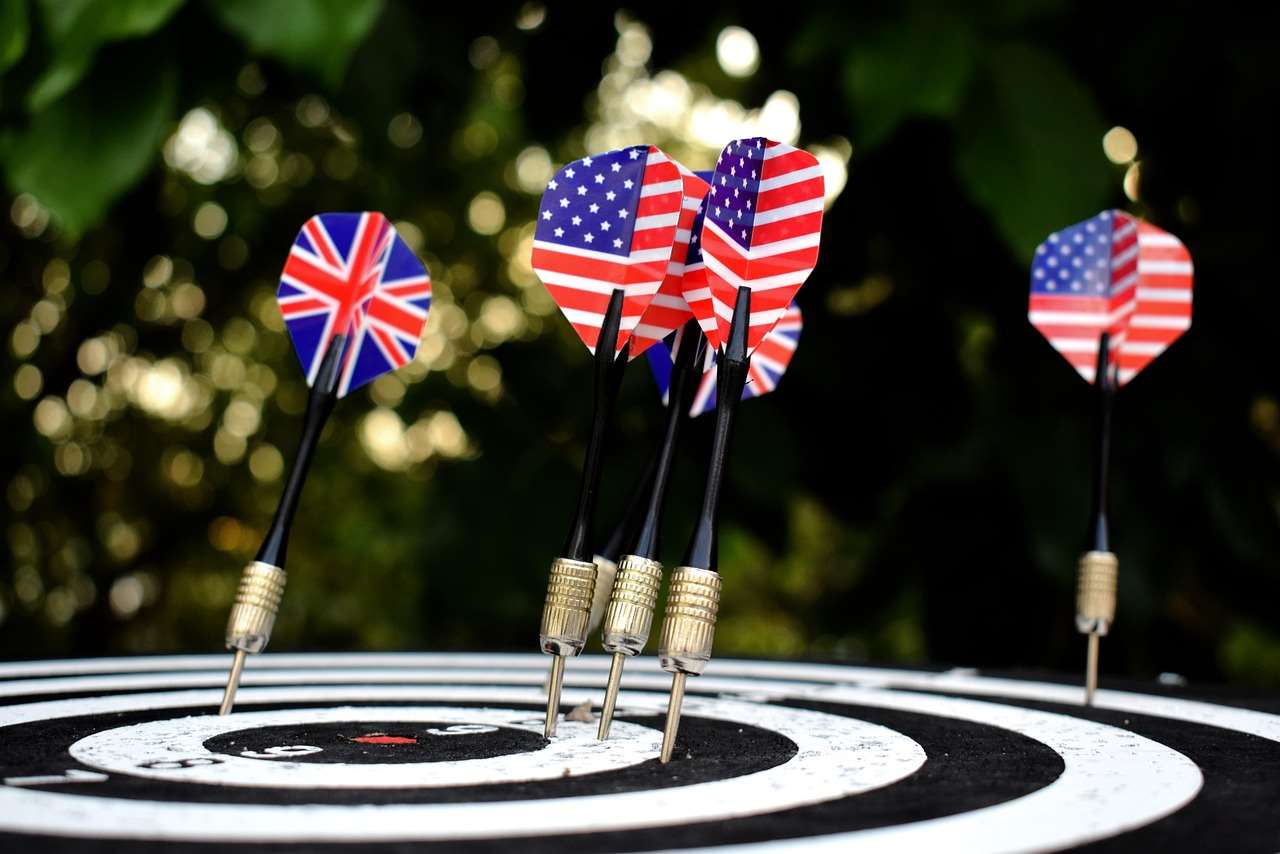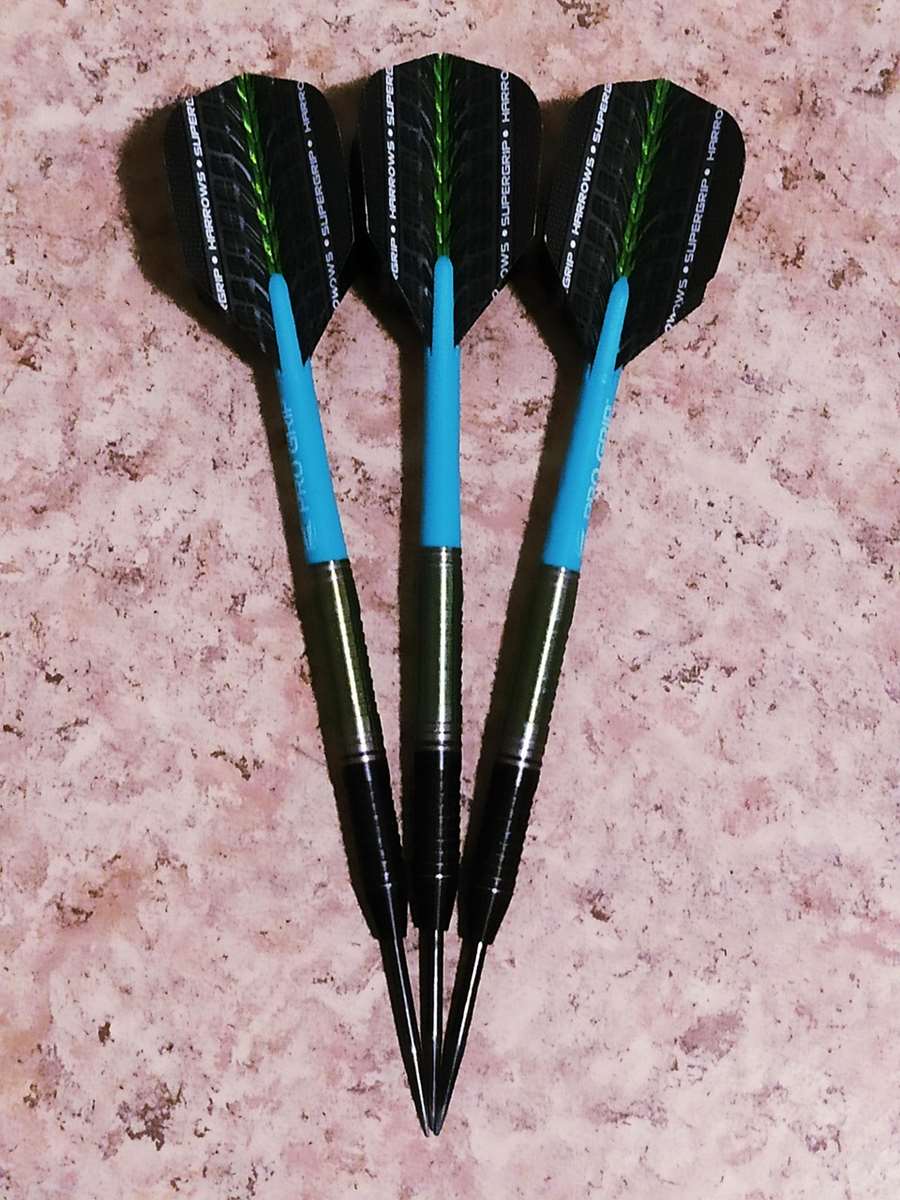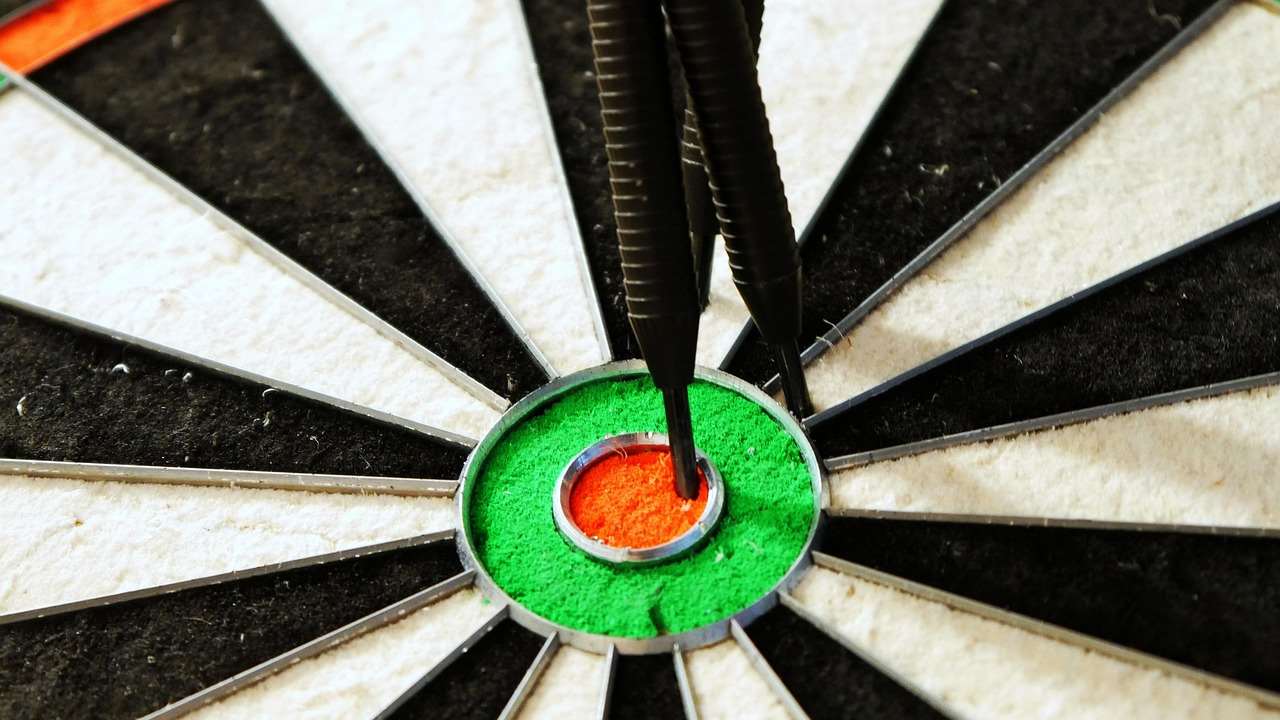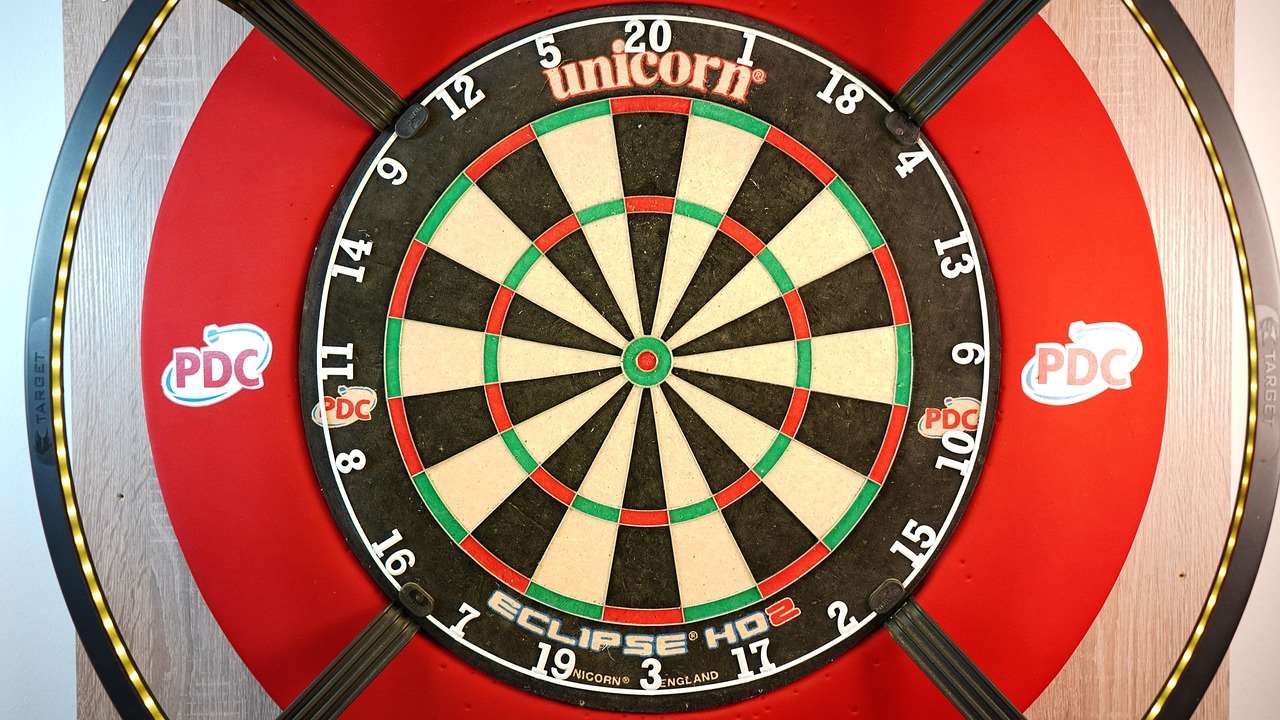The darts best stance boils down to finding what’s comfortable and repeatable for you, but generally involves a sideways or angled position relative to the oche to maximize stability and accuracy. This article will explore various stance options, including the benefits and drawbacks of each, to help you discover the optimal setup for your game, along with tips on balance, posture, and follow-through.
⚠️ Still Using Pen & Paper (or a Chalkboard)?! ⚠️
Step into the future! The Dart Counter App handles all the scoring, suggests checkouts, and tracks your stats automatically. It's easier than you think!
Try the Smart Dart Counter App FREE!Ready for an upgrade? Click above!
Understanding the Fundamentals of a Good Darts Stance
Before diving into specific stances, let’s establish some fundamental principles that underpin any effective approach. A solid darts throwing stance is more than just standing a certain way; it’s about creating a stable platform for consistent throws. This includes balance, posture, and weight distribution.
Balance is crucial for maintaining stability throughout your throwing motion. You want to avoid swaying or leaning excessively, which can throw off your aim. Experiment with different foot positions to find your center of gravity.
Posture plays a significant role in accuracy and consistency. Maintain a straight back, relaxed shoulders, and a head position that allows you to focus clearly on the target. Slouching or hunching over can restrict your movement and negatively impact your throw.
Weight distribution should be balanced and comfortable. Avoid placing too much weight on either your front or back foot, as this can also lead to instability. A slightly forward lean is generally recommended, but it should be subtle and controlled.

Exploring Different Darts Stances
There are three primary darts stance techniques used by players of all skill levels: the front-on stance, the sideways stance, and the angled stance. Each has its own set of advantages and disadvantages, so finding the one that suits you best is key.
Front-On Stance
In the front-on stance, your body faces the dartboard directly. Both feet are positioned more or less parallel to the oche. This stance offers a clear view of the target and can feel more natural for beginners.
- Pros: Clear view of the board, can feel more intuitive.
- Cons: Can be less stable, may restrict throwing motion.
Sideways Stance
The sideways stance involves positioning your body perpendicular to the oche. Your leading foot is placed close to the oche, and your trailing foot is positioned behind it for support. Many professionals use this stance as it promotes stability.
- Pros: Excellent stability, allows for a smooth throwing motion.
- Cons: Can feel awkward at first, may require more practice to master.
Angled Stance
The angled stance is a hybrid of the front-on and sideways stances. Your body is positioned at an angle to the oche, typically around 45 degrees. This darts stance position attempts to balance the benefits of both the front-on and sideways options.
- Pros: Good balance between stability and visibility, adaptable to individual preferences.
- Cons: Requires finding the optimal angle for your body type and throwing style.
Finding *Your* Darts Best Stance: A Step-by-Step Guide
There’s no one-size-fits-all answer to what constitutes the darts best stance. The ideal stance is highly personal and depends on various factors, including your body type, throwing style, and comfort level. Here’s a step-by-step guide to help you find your perfect stance:
- Experiment with each stance: Try the front-on, sideways, and angled stances for several practice sessions each. Pay attention to how each stance feels and how it affects your accuracy.
- Focus on balance: Whichever stance you choose, ensure you feel balanced and stable. Adjust your foot position until you find a comfortable center of gravity.
- Maintain good posture: Keep your back straight, shoulders relaxed, and head focused on the target. Avoid slouching or hunching over.
- Refine your foot placement: Experiment with different foot positions within each stance. Slight adjustments can make a big difference in your balance and stability.
- Consider your throwing arm: Ensure your stance allows your throwing arm to move freely and naturally. Avoid stances that restrict your movement or cause you to strain. You may want to consider darts bedroom ideas to practice in the comfort of your own home.
- Practice and refine: The key to finding your perfect stance is consistent practice. Pay attention to how your stance affects your accuracy and make adjustments as needed.

Fine-Tuning Your Stance: Advanced Tips
Once you’ve identified a stance that feels comfortable and stable, you can further fine-tune it to optimize your performance. Here are some advanced tips to consider:
Weight Transfer
The way you transfer your weight during your throw can significantly impact your accuracy and power. Experiment with shifting your weight slightly from your back foot to your front foot as you release the dart. This can help generate momentum and improve your follow-through.
Head Position and Eye Alignment
Maintaining a consistent head position and eye alignment is crucial for aiming accurately. Keep your head still and focus your eyes on the target throughout your throwing motion. Avoid tilting or moving your head, as this can throw off your aim. If you use a Cricket darts scorer app, keep your eye on the target, not the score!
The Importance of Follow-Through
A proper follow-through is essential for consistent throws. Extend your arm fully towards the target after releasing the dart. This helps guide the dart accurately and prevents you from cutting your throw short.
Adjusting for Different Throwing Styles
Your darts throwing style will also influence your stance. Players with a higher arc may benefit from a slightly more upright stance, while those with a flatter trajectory may prefer a more forward-leaning stance. Adapt your stance to complement your natural throwing motion.

Common Mistakes to Avoid in Your Darts Stance
Even with a well-chosen stance, certain mistakes can hinder your performance. Here are some common pitfalls to avoid:
- Locking your knees: Keep your knees slightly bent to maintain flexibility and balance. Locking your knees can make you stiff and unstable.
- Leaning too far forward or backward: Maintain a balanced posture and avoid leaning excessively in either direction. This can throw off your center of gravity and affect your accuracy.
- Swaying during your throw: Keep your body as still as possible during your throwing motion. Swaying can disrupt your aim and make it difficult to throw consistently.
- Not practicing consistently: The key to mastering any darts throwing stance is consistent practice. Dedicate time to refine your stance and ingrain it into your muscle memory.
Darts Stance and Potential Injuries
While darts is generally a low-impact sport, improper stance and technique can lead to injuries over time. Pay attention to your body and avoid putting excessive strain on your back, shoulders, or knees.
Maintaining good posture and using proper throwing mechanics can help prevent injuries. If you experience any pain or discomfort, take a break and consult with a medical professional if necessary. Ensure your darts oche mat length is correct to prevent back strain.

The Mental Game and Your Darts Best Stance
Your mental state can significantly impact your stance and overall performance. Stay relaxed, focused, and confident. Avoid getting frustrated or tense, as this can lead to poor form and inaccurate throws.
Visualize success and maintain a positive attitude. Trust in your training and your stance, and focus on executing your throw with precision and control. Remember, even professional players have bad days and the best way to improve is to keep throwing! Consider reviewing how does the darts masters work to improve your understanding of professional play.
Adapting Your Stance for Different Dartboards and Environments
While you should strive for consistency in your stance, you may need to make slight adjustments depending on the dartboard and the environment in which you are playing.
Uneven floors or poorly lit areas can affect your balance and visibility. Adjust your stance accordingly to compensate for these factors. Also, different dartboards may have slightly different heights or thicknesses, which can also require minor adjustments to your stance and throwing motion.

Conclusion: Mastering Your Darts Best Stance for Consistent Performance
Finding the darts best stance is a journey of experimentation and refinement. There’s no magic bullet, but by understanding the fundamental principles of balance, posture, and weight distribution, and by exploring different stance options, you can discover the setup that works best for you.
Remember to focus on consistent practice, pay attention to your body, and adapt your stance as needed. By mastering your stance, you’ll create a solid foundation for consistent accuracy and improved performance on the dartboard. Ultimately, the best darts stance is the one that allows you to throw your best, consistently and comfortably. Now go practice and find yours!
Ready to take your darts game to the next level? Visit our website to explore a wide range of darts equipment and accessories to help you optimize your performance and enjoy the sport to the fullest!
Hi, I’m Dieter, and I created Dartcounter (Dartcounterapp.com). My motivation wasn’t being a darts expert – quite the opposite! When I first started playing, I loved the game but found keeping accurate scores and tracking stats difficult and distracting.
I figured I couldn’t be the only one struggling with this. So, I decided to build a solution: an easy-to-use application that everyone, no matter their experience level, could use to manage scoring effortlessly.
My goal for Dartcounter was simple: let the app handle the numbers – the scoring, the averages, the stats, even checkout suggestions – so players could focus purely on their throw and enjoying the game. It began as a way to solve my own beginner’s problem, and I’m thrilled it has grown into a helpful tool for the wider darts community.